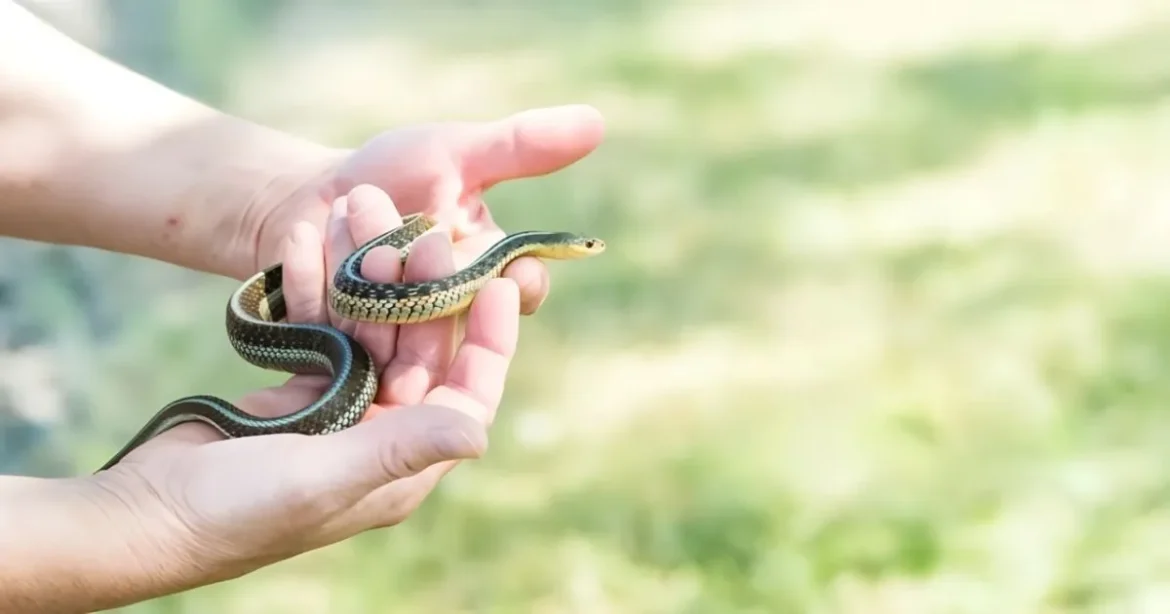Thinking about getting a pet snake but not sure where to begin? Small species like corn snakes or ball pythons are great for beginners. They are easy to care for and don’t need much space or time.
Many new owners worry about handling or caring for snakes. But small pet snakes do well with regular feeding and the right habitat. They are quiet, clean, and fun to watch, perfect for apartments or first-time reptile owners.
This guide will cover everything you need to know. From picking the right species to setting up a safe home. You’ll learn about diet, health, and following local laws for these unique pets.
Key Takeaways
- Small pet snakes like corn snakes require less space than many other pets.
- They’re cost-effective to care for compared to dogs or cats.
- Most small species are calm and adapt well to handling with practice.
- Research local regulations before adopting to ensure legality.
- Proper habitat setup is key to keeping your pet snake healthy and happy.
Understanding Small Snakes as Pets
Small snakes like corn snakes and ball pythons are great pets. They need less space and time than other pets. They are quiet and easy to care for, perfect for beginners.
Benefits of Keeping Small Snakes
- Space efficiency: They fit well in small homes or apartments.
- Low maintenance: They need only weekly feeding and monthly cleaning.
- Calm temperament: Most small snakes are calm and enjoy being handled.
Unique Traits of Small Snakes
Small snakes have unique traits. They are active at dawn or dusk and have beautiful colors. They communicate through body language, showing happiness or curiosity.
“Their quiet presence and striking appearances make small snakes a standout choice,” notes a study by the National Reptile Owners Council. “They reward caretakers with fascinating, low-key companionship.”
Choosing the Right Snake for You
Finding the right small snake means matching its needs to your lifestyle. Think about space, time, and the snake’s personality. Corn snakes and ball pythons are great because they are calm and easy to care for.
- Research species behavior: Some snakes do better alone, while others need certain humidity levels.
- Assess your space: Make sure your home has a quiet spot for their enclosure, away from extreme temperatures.
- Plan for longevity: Many small snakes live 15+ years—commit to their lifelong care.
When buying, choose reputable breeders or pet stores. If buying snakes for sale online, check the seller’s reputation. Look for clear reviews and ask to see care records. Don’t rush—always check if the species is legal in your state.
Ask sellers these questions: How old is the snake? What’s its feeding history? Are health records available? Transparency is key—never hesitate to walk away from unclear answers.
Legal rules about snakes vary by location. Check with your state’s wildlife agency before making a decision. A well-researched choice ensures a happy and safe home for your new pet.
How to Set Up a Snake Habitat
Setting up a safe space for your pet snake starts with choosing the right enclosure. The size and design must fit your snake’s species and size. A cramped or oversized habitat can stress your pet, so research your snake’s needs first.
Choosing the Right Enclosure
Choose an enclosure that offers good ventilation without drafts. Glass terrariums are good for smaller species, while plastic tubs retain heat better. Make sure the enclosure’s length is at least two-thirds of your snake’s full-grown size. Also, ensure the lids are secure to prevent escapes.
Essential Habitat Accessories
Every habitat needs basic elements to mimic natural environments. Use substrates like aspen shavings or coconut husk to absorb moisture. Add hides in two locations—one on the warm side, one on the cool side—for stress relief. Include a water bowl large enough for your snake to soak.
Temperature gradients are critical. Use under-tank heaters or heat lamps to create warm and cool zones. Monitor with a thermometer and hygrometer, aiming for humidity levels specific to your snake’s origin. Clean the enclosure weekly to prevent bacteria buildup.
Nutrition and Feeding Guidelines
Proper nutrition is key for your small snake’s health. Most species do well on rodents, insects, or eggs. Choose high-protein foods like frozen/thawed mice, crickets, or mealworms. Make sure to feed the right amount based on your snake’s age and size.
How you feed matters. Use frozen prey from trusted suppliers; live prey can stress your pet. Always thaw frozen food before feeding. Never feed in the enclosure to avoid bites.
- Feeding schedule: Hatchlings eat every 5-7 days. Adults need meals every 10-14 days.
- Calcium supplements: Dust prey with calcium powder to prevent bone disorders.
- Hydration: Provide clean water daily in a shallow dish.
Avoid common mistakes. Overfeeding can cause obesity. Never handle your snake right after feeding. They need time to digest. If your snake refuses to eat or regurgitates, see a reptile vet.
“Consistency is key. Stick to a routine to reduce stress and ensure proper growth,” advises Dr. Laura Mitchell, a reptile care specialist.
Change diets as your snake grows. Young snakes need small meals often, while adults eat less but bigger meals. Rotate food types to mimic natural hunting and prevent nutritional gaps.
Common Health and Maintenance Concerns
Keeping your small snake healthy means staying alert and doing routine checks. Spotting health problems early and sticking to care routines helps avoid big issues.
Identifying Signs of Illness
Look out for these signs of illness that need quick action:
- Lethargy or not wanting to eat for a long time
- Visible swelling, mites, or odd shedding
- Hard breathing or discharge from eyes/nose
- Being too aggressive or not moving right
If you see any of these signs, get in touch with a reptile vet fast. Quick action can help your pet get better.
Preventative Care Tips
Here are ways to lower health risks:
- Monthly habitat checks: Clean the substrate, check the temperature and humidity, and sanitize feeding tools.
- Quarterly vet visits: See an exotic pet vet every three months to check weight, parasites, and overall health.
- Quarantine new snakes: Keep new snakes separate for 30 days before introducing them to others to stop disease spread.
- Watch for behavior changes: Keep an eye on feeding times and activity to catch any unusual changes early.
By doing regular maintenance and being proactive, you can keep your pet healthy for a long time.
Handling and Interaction Tips
Building trust with your pet snake starts with gentle, consistent handling. Always prioritize safety and comfort for both you and your reptile. Begin with short sessions to avoid overwhelming your pet.
- Start Slow: New snakes may need 1–2 weeks to adjust before handling. Juveniles and nervous species like ball pythons benefit from 5-minute sessions, 2–3 times weekly.
- Hygiene First: Wash hands before and after interactions to prevent scent transfer or bacteria exposure.
- Support Their Body: Use both hands to cradle the snake’s torso. Avoid gripping the tail or head—this reduces stress signals like hissing or musking.
| Snake Species | Optimal Handling Time | Frequency |
|---|---|---|
| Corn Snake | 10–15 minutes | 3–4 times weekly |
| Rough-Scaled Python | 5–8 minutes | 2–3 times weekly |
| Kingsnake | 10–12 minutes | 3–4 times weekly |
Avoid forcing interaction during shedding or feeding times. Look for calm signs like relaxed coils or exploring behavior. If your snake tenses, return it to the enclosure and try again later.
“Consistency builds trust. Always end sessions on a positive note to reinforce positive associations.”
Never handle immediately after feeding—this can cause regurgitation. Use soft towels to spot-clean habitats before interactions, maintaining a clean environment. Gradually increase duration as your pet grows comfortable.
Legal Considerations and Safety Practices
Before getting a small snake, legal regulations are key. Laws on snake ownership differ by state. In places like California and Florida, you might need a permit for small snakes. Arizona, for example, bans some species. Breaking these laws can result in fines or losing your pet.
Understanding Local Regulations
First, reach out to your local wildlife agency or check state websites. Ask if you need a reptile licensing permit. Some places, like Washington, require microchipping for reptiles. Keep your documents up to date to avoid trouble.
- Check for federal exemptions (e.g., USDA licenses for breeders vs. hobbyists)
- Verify if your chosen species is legal in your county
- Report ownership to local authorities if required
Safe Handling Procedures
Even non-venomous snakes need gentle handling. Follow these safety protocols:
- Wash hands before and after handling
- Use feeding tongs to avoid bites
- Don’t handle after cleaning the cage until gloves are off
| Snake Type | Handling Frequency | Risk Level |
|---|---|---|
| Corn Snake | 2x weekly (5-10 mins) | Low |
| Rat Snake | 1x weekly (10 mins) | Moderate |
| Hognose Snake | As needed | Low |
Watch your snake’s body language. Signs of stress include a flattened head or fast breathing. Keeping your pet safe is crucial for a happy relationship.
Conclusion
Owning small snakes as pets needs careful planning and ongoing effort. A good habitat with the right size and temperature is key for their health. Keeping a regular feeding schedule and checking their health often helps avoid problems.
Before getting a snake, check local laws to make sure you follow them. By focusing on their needs and making informed choices, you can create a safe space for both you and your pet. Small snakes can be great companions if you understand and meet their care needs.
As you dive into this hobby, remember that making smart choices leads to success in caring for reptiles.
FAQ
What are the best snakes to have as pets?
Corn snakes, ball pythons, and garter snakes are great for beginners. They are easy to care for and gentle. This makes them perfect for those new to snake ownership.
Where can I find snakes for sale online?
Look for websites like MorphMarket and Kingsnake. Make sure the seller is trustworthy and offers health guarantees.
How can I choose the right snake for my lifestyle?
Think about the snake’s size, care needs, and how it acts. Pick a species that matches your home, schedule, and comfort with reptiles.
What should I include in my snake’s habitat?
Your snake needs a good enclosure, heat, hiding spots, water, and substrate. Try to make its environment as natural as possible.
How often should I feed my pet snake?
Feeding times depend on the snake’s type and age. Young snakes eat more often, while adults eat less. Always give prey that’s the right size.
What are common signs of illness in snakes?
Watch for signs like being very tired, not wanting to eat, bad shedding, and breathing problems. Catching these early can help your snake get better faster.
What are some tips for handling my snake safely?
Always hold your snake right and move slowly. Let it get used to being handled. Start with short times and increase it as you both get more comfortable.
Are there legal considerations for owning a snake?
Yes, laws about exotic pets vary by place. Check your local rules on owning snakes, including permits and which species are allowed. Following the law is key to owning a snake safely.





1 comment
[…] natural needs. Begin with a secure enclosure that fits its size. A 20-gallon tank is perfect for small snakes like corn snakes. Larger species need bigger […]